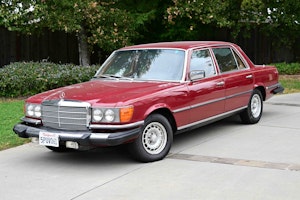Media | Articles
Celebrating two fantastic 429 V-8s on 4/29
The first mainstream V-8 engine to displace 429 cubic inches was in a Cadillac, in 1964, as a replacement for GM’s 390 V-8. In those days, long before the V-series and Blackwings, Cadillacs were not focused too much on outright performance. But when you’ve got two tons of finned elegance to shuttle around, power is always welcome. Besides, the Standard of the World couldn’t exactly struggle to pass the Falcons and Novas crowding the interstate.

Cadillac’s 429 was the largest of the brand’s engines offered from 1964 through 1967, producing a respectable 340 hp and 480 lb-ft of torque. A new, even larger big-block was developed for 1968, initially displacing 472 cubic inches and eventually 500 cubic inches, making it the largest V-8 ever offered in a production car. Those later V-8s eclipsed the 429 somewhat, and a small but dedicated aftermarket emerged to help the 472 and 500 become truly potent powerplants.

Boss 429: The other 7.0-liter “hemi”
Ford’s answer to Chrysler’s 426 Hemi—which was busy tearing up the NASCAR superspeedways—was a hemi V-8 of its own (In a manner of speaking.) When Ford looked to add huge valves to its 385-series big-block V-8, it too chose to rotate the valves from an inline configuration and place them nearly opposite one another. However, differing from Chrysler’s Hemi, which used shaft-mounted rockers and intake and exhaust valves that were arranged in sets that were rotated 90 degrees from a traditional wedge combustion chamber’s inline orientation, the Boss 429 used pedestal-mounted rockers and didn’t twist the combustion chamber nearly as much. The combustion chamber of a 426 Hemi isn’t truly hemispherical, and the Boss 429 is even further from a perfect half-sphere, but the comparison holds. The Boss 429 still used massive valves (2.28-inch diameter intake and 1.90-inch exhaust) that closed off ginormous ports.

Boss 429s more than held their own in NASCAR in 1969 where the monster engine was installed in Ford’s Torino and Mercury’s Cyclone Spoiler II. After taking over for the 427 FE, the Boss 429 helped Ford sail to the 1969 NASCAR manufacturers championship ahead of Dodge and the 426 Hemi. Strangely enough, Ford chose to homologate its NASCAR big-block, with its wide cylinder heads, by dropping it between the shock towers of the Ford Mustang rather than the Torino that plied the NASCAR speedways. Fewer than 1500 Mustangs were given the brute of a big-block between 1969 and 1970, while just two drag-race Cougars received the engine.

Unlike the high-rpm NASCAR engine, the street-going 1969 Boss 429 had a hydraulic cam and a restrictive intake manifold. A sold-roller cam was available in 1970 and helped the engine rev a bit better, but the huge ports really only began to work their magic at high engine speeds that the factory intake manifold couldn’t support. Like many engines of the muscle car era, the foundation for power was there and could be fully unlocked with a new intake, a rowdy cam, and the proper tuning.
Marketplace
Buy and sell classics with confidence

The low production numbers, NASCAR pedigree, and the shock factor of those beautiful valve covers make the Mustang Boss 429 one of the most desirable Mustangs that isn’t also a Shelby. And 4/29 is as good a day as any to look back at the race engine that made these rare ponies so special.













